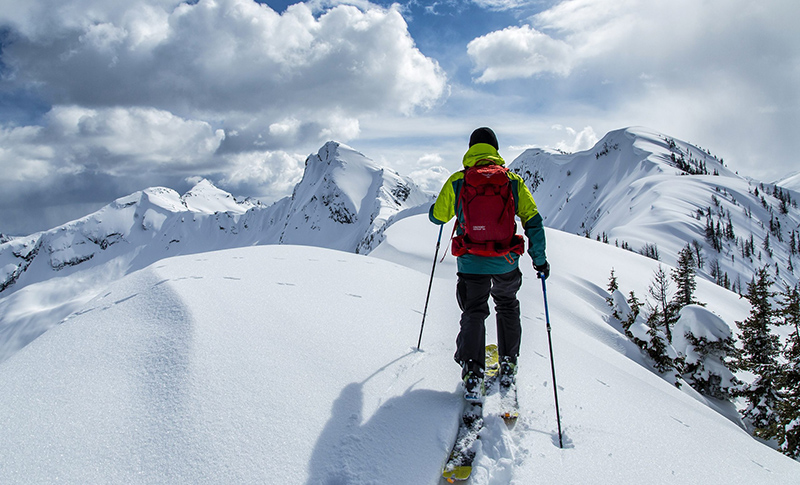What’s the difference between Backcountry, Sidecountry, Frontcountry, and Slackcountry?
These terms are so similar it’s easy to get confused so we wanted to set things straight. With the following definitions of various backcountry skiing options please keep in mind that they are all backcountry skiing which means that you need the same gear and skills to travel safely and of course perform a self-rescue.
Backcountry
This is the broadest term describing any terrain not managed for hazards like avalanches, creeks, and cliffs. Anytime you are skiing without ski patrol or hazard mitigation, you are in the backcountry. All the other terms below would also be backcountry skiing. Even skiing inside a ski resort boundary before or after the resort’s normal operating schedule could be considered backcountry.
Sidecountry
The Sidecountry is backcountry terrain just outside a ski resort’s boundary. This area is often accessed after riding a lift and t some resorts means that you have to exit the resort through approved gates. From there, the individual can skin or hike to their desired terrain. “Sidecountry is backcountry” is an accurate phrase you may hear to make people aware that the sidecountry carries the same inherent risks and dangers as the remote backcountry. Just because you are close to a ski area doesn’t mean the risk is less, the term just details the type of backcountry more precisely.
Frontcountry
The best way to define frontcountry is it is easy-to-access backcountry terrain. Usually, it is right off the road or on a mountain pass. It typically involves a simple skin track or boot pack, and the descent is simply back down to the road. If you break a binding or get a minor injury you can typically still wade your way down the hill back to your car. Keep in mind that this is still within the backcountry and carries the same hazards and dangers—anything outside a resort boundary is backcountry.
Slackcountry
Think of slackcountry as backcountry that doesn’t involve any uphill travel. It is the slacker’s version of backcountry skiing. It could be terrain just outside a ski resort that can be immediately skied with access back to the resort. Or you end in a spot where you can be picked up or hitch a ride back to your starting point. Again, keep in mind that this is still within the backcountry and carries the same hazards and dangers and anything outside a resort boundary is backcountry.
Whether you more specifically call it sidecountry, frontcountry, or slackcountry, just know that it is all backcountry. Because of this, it should be treated with respect. Always have the appropriate gear and be educated in backcountry travel and rescue.
Thanks to our friends at snowbrains.com for these definitions.







